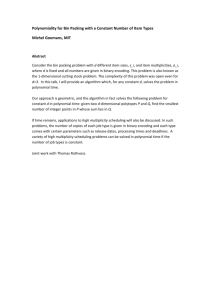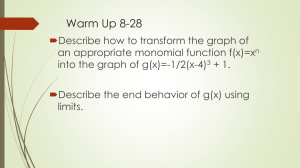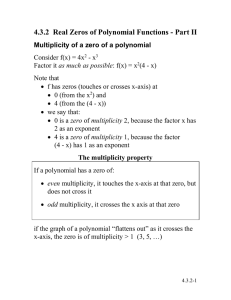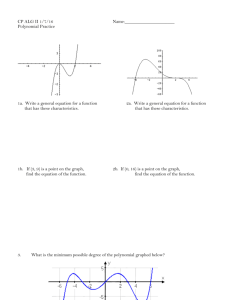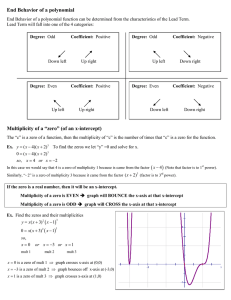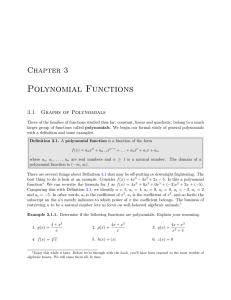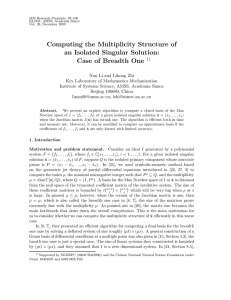Notes - Section 3.2
advertisement
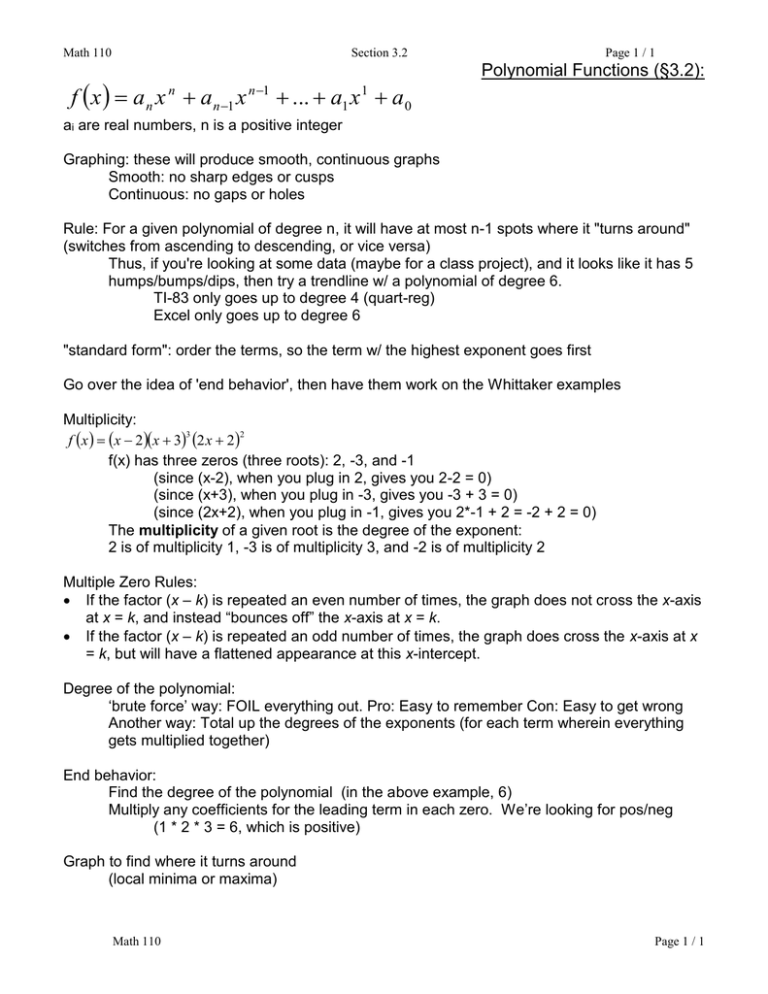
Math 110 Section 3.2 f x a n x a n 1 x n Page 1 / 1 Polynomial Functions (§3.2): n 1 ... a1 x a0 1 ai are real numbers, n is a positive integer Graphing: these will produce smooth, continuous graphs Smooth: no sharp edges or cusps Continuous: no gaps or holes Rule: For a given polynomial of degree n, it will have at most n-1 spots where it "turns around" (switches from ascending to descending, or vice versa) Thus, if you're looking at some data (maybe for a class project), and it looks like it has 5 humps/bumps/dips, then try a trendline w/ a polynomial of degree 6. TI-83 only goes up to degree 4 (quart-reg) Excel only goes up to degree 6 "standard form": order the terms, so the term w/ the highest exponent goes first Go over the idea of 'end behavior', then have them work on the Whittaker examples Multiplicity: 3 2 f x x 2 x 3 2 x 2 f(x) has three zeros (three roots): 2, -3, and -1 (since (x-2), when you plug in 2, gives you 2-2 = 0) (since (x+3), when you plug in -3, gives you -3 + 3 = 0) (since (2x+2), when you plug in -1, gives you 2*-1 + 2 = -2 + 2 = 0) The multiplicity of a given root is the degree of the exponent: 2 is of multiplicity 1, -3 is of multiplicity 3, and -2 is of multiplicity 2 Multiple Zero Rules: If the factor (x – k) is repeated an even number of times, the graph does not cross the x-axis at x = k, and instead “bounces off” the x-axis at x = k. If the factor (x – k) is repeated an odd number of times, the graph does cross the x-axis at x = k, but will have a flattened appearance at this x-intercept. Degree of the polynomial: ‘brute force’ way: FOIL everything out. Pro: Easy to remember Con: Easy to get wrong Another way: Total up the degrees of the exponents (for each term wherein everything gets multiplied together) End behavior: Find the degree of the polynomial (in the above example, 6) Multiply any coefficients for the leading term in each zero. We’re looking for pos/neg (1 * 2 * 3 = 6, which is positive) Graph to find where it turns around (local minima or maxima) Math 110 Page 1 / 1

